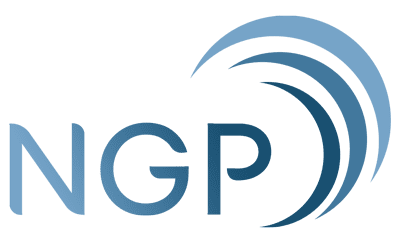Have you heard of mobile optimization? It is the process of enhancing a website’s design, content, and functionality to provide a smooth and optimal user experience (UX) on mobile devices.
The fact that mobile devices account for over 54.8% of global internet traffic (Q1 of 2021, according to Statista) highlights the need for businesses to prioritize mobile optimization by ensuring their websites work well on various screen sizes, load quickly, and are easy to navigate.
Optimization is also crucial for your brand’s online visibility. It impacts user engagement, search engine rankings, and conversion rates. By ensuring a positive mobile experience, your business can maintain its reputation, foster brand loyalty, and drive growth.
Mobile optimization factors that affect UX
Loading speeds
Mobile users have high expectations for website speed. Research indicates that 53% of users will leave a site if it takes longer than three seconds to load. Three seconds!
Your business can meet this expectation by optimizing images, minimizing code, and using browser caching. These strategies can improve load speeds, leading to a better user experience and lower bounce rates.
Responsive web design
This allows websites to seamlessly adapt to different screen sizes and devices. By using flexible layouts and CSS media queries, businesses can ensure a consistent user experience across platforms. Your website will look great whether they’re viewing it from an iPhone or an Android, a tablet or a desktop. This adaptability enhances user satisfaction and keeps visitors engaged.
Mobile-friendly navigation
Easy navigation on mobile sites retains users. Simple menus, clear search functions, and visible call-to-action (CTA) buttons make it easier for users to find what they need and take action, such as making a purchase. The less ‘work’ or clicks involved to get where they’re supposed to go, the better!
Mobile optimization and search engine rankings
Understanding Google’s mobile-first indexing
Did you know that mobile optimization could actually make or break your SEO ranking? Google has adopted a mobile-first indexing approach, meaning it prioritizes mobile-friendly websites in its search results. Search engines in general favor websites that provide a positive mobile experience. By using relevant keywords, optimizing meta tags, and implementing structured data, you can enhance your business’ mobile SEO and improve search rankings.
Mobile optimization and click-through rates (CTR)
Improved search engine rankings and better visibility in search results also lead to higher CTR. This increase in clicks can result in more traffic, greater user engagement, and ultimately higher conversion rates. If you’re looking to improve online visibility and clicks for your business, do not skip mobile optimization.
Apply these best practices!
Streamline mobile checkout processes
A smooth mobile checkout process is essential for converting visitors into customers. Simplified forms, guest checkout options, and secure payment gateways enhance the mobile checkout experience so your potential customers don’t abandon cart – and you don’t lose sales.
Offer mobile payment options
Integrating various mobile payment methods such as GCash, Maya, and even Apple Pay or PayPal can enhance the mobile checkout experience. By catering to different user preferences, businesses can encourage repeat purchases and improve their online brand presence.
Implement Accelerated Mobile Pages (AMP)
Accelerated Mobile Pages (AMP) is an open-source framework that helps create fast-loading mobile web pages. Implementing AMP can boost load speeds, improve user engagement, and potentially enhance search engine rankings.
Use responsive images and media
Employing responsive images and media is a best practice for mobile optimization. By using techniques like srcset and sizes attributes, businesses can serve optimized images that load quickly, improving user satisfaction.
Minimize JavaScript and CSS
While we’re on the topic of code, reducing the size of JavaScript and CSS files can significantly improve mobile loading times. Techniques like minification, compression, and asynchronous loading help optimize mobile websites, enhancing the user experience and reducing bounce rates.
Test and improve regularly
Regularly testing and refining mobile websites is crucial for maintaining a strong online presence. Tools like Google’s Mobile-Friendly Test can identify areas for improvement, enabling your business to enhance its mobile UX effectively.
If you haven’t optimized for mobile, now you HAVE to!
Mobile optimization is no longer optional in this day and age. It is essential for a robust online brand presence as it directly influences user engagement, search rankings, and conversion rates. Your business providing a positive mobile UX directly equates to brand loyalty, enhanced reputation, and business growth.
As the mobile landscape evolves with new trends and technologies, you must stay adaptable. Remain informed and responsive so your company can maintain its online presence and capitalize on the opportunities – and there are many! – that mobile optimization brings.
By focusing on mobile UX, businesses like yours can engage users, improve search engine rankings, and drive growth, ensuring their long-term success.
Don’t know where to start? Partnering with a public relations agency that has expertise in digital marketing and SEO integration can further strengthen efforts to optimize mobile presence and enhance overall brand visibility. Contact NGP-IMC today!

Amy Ruth Valenzuela is a graduate of Far Eastern University, where she earned a Bachelor of Arts in Communication. With a strong passion for communications and media relations, Ruth has developed a diverse skill set that includes journalism, scriptwriting, events and production management, risk management, social media marketing, and layout and graphic design. Her experience in these areas has shaped her approach to storytelling and content creation, driving a commitment to excellence in every project. Ruth is dedicated to leveraging her expertise to create impactful narratives and foster meaningful connections in the industry.


